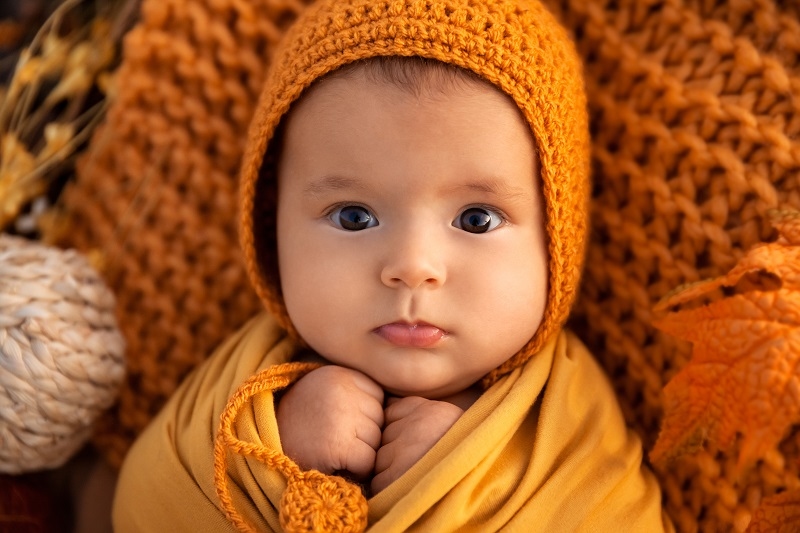
If you’ve ever watched a newborn sleep peacefully, wrapped snugly like a tiny burrito, you’ve seen swaddling in action. For centuries, parents across cultures have turned to swaddling as a way to calm their babies and help them rest. But when you’re a new parent staring at that wriggly little body, the big question arrives: how to swaddle a baby safely and comfortably?
This guide walks through the practice step by step, but it also explores why it matters, how long to do it, and what common mistakes to avoid.
Before folding that first blanket, it helps to understand why to swaddle a newborn. Babies spend nine months in the womb, cushioned and contained. Birth introduces them to a wide, noisy world. Swaddling mimics some of that cosy security, helping them feel safe.
It can also reduce the startle reflex—that sudden flailing of arms that wakes babies up. Many parents find swaddling helps their newborns sleep longer stretches and settle more easily.
Still, swaddling isn’t magic. It’s one tool in the parenting toolkit, not a cure-all. Some babies adore it. Others fuss no matter how carefully you wrap. That’s normal.
When you think about how to swaddle a newborn, the most important word is gentle. Swaddling should hold your baby snugly without being too tight. Here’s a basic method:
Lay a lightweight blanket flat, shaped like a diamond.
Fold down the top corner to form a straight edge.
Place your baby on their back, shoulders just below the fold.
Take one side of the blanket across their body and tuck under the opposite arm and back.
Fold the bottom corner up, leaving enough room for hips and legs to move.
Bring the remaining side across and tuck under.
Check that the wrap is firm but not restrictive. Hips should have space to bend and move—tight swaddles around the legs can cause hip problems.
Parents often ask, what’s the best way to swaddle a newborn? Truthfully, it depends. Some prefer muslin cloths because they’re breathable and soft. Others like swaddle sacks with Velcro or zippers, which save time at 3 a.m. Both can work.
The best way is the one that keeps your baby safe and helps them sleep without overheating. Always place your baby on their back to sleep, never on their stomach. And if your baby resists full arm wrapping, try leaving one or both arms free.
Swaddling isn’t only about technique. Timing matters too. Many parents use swaddling as part of a bedtime routine—feed, burp, cuddle, then swaddle a newborn to sleep. The consistent sequence signals rest.
Some babies respond best when swaddled just before the final feed, others after. Try both and notice which feels calmer for your little one. Swaddling can be a bridge between the busy world and the quiet needed for sleep.
This is a question every new parent asks: how long to swaddle a baby per day? There’s no single answer, but here are some guidelines.
Swaddling works best for naps and nighttime sleep.
Babies also need “free time” with arms and legs unrestricted for growth and movement.
Over-swaddling can raise risks of overheating, so always monitor.
Think of swaddling as something you use when rest is needed, not all day long.
Closely tied to the last point is the bigger milestone: how long should you swaddle a newborn before it’s time to stop? Most babies enjoy swaddling up until around two months. The critical sign to watch is rolling.
Once a baby shows signs of rolling over, swaddling must end. At that stage, swaddling becomes unsafe because a wrapped baby who rolls onto their stomach can’t push back to a safe position. Many parents transition to sleep sacks or wearable blankets at that point.
Related Resource: How to Handle Baby Sleep Regression Like a Pro Parent 2025?

Safety isn’t just about rolling. Overheating is another concern. Always choose breathable fabrics, dress your baby lightly under the swaddle, and keep the room at a comfortable temperature.
And remember, swaddling is not compulsory. If your baby doesn’t like it, don’t force it. Some babies prefer freer movement, and that’s okay. The point of swaddling is comfort, not struggle.
Even with clear steps, mistakes happen. The biggest? Wrapping too tightly around the hips. Babies need their legs to bend and spread naturally. A too-tight swaddle can lead to hip dysplasia.
Another mistake is layering too many blankets or clothing items underneath. Babies can’t regulate temperature like adults, so overheating becomes risky.
And finally, some parents swaddle even after babies begin rolling. It’s tempting, especially when swaddling helped them sleep longer. But safety always comes first.
Swaddling has been part of parenting for centuries, across cultures. It’s not just technique—it’s tradition. In some places, swaddling symbolises care and belonging. In others, it’s tied to rituals around birth.
For modern parents, it often becomes part of the bonding process. Wrapping a baby carefully is a way of saying, “I’ve got you. You’re safe.” That reassurance matters as much for the parent as for the child.
If you’re trying swaddling for the first time, a few tips help.
Practice when your baby is calm, not when they’re screaming.
Don’t worry if your folds aren’t perfect—comfort is the goal.
Experiment with different blankets or swaddle sacks until you find what works.
Keep it consistent. Babies often learn to associate swaddling with sleep, which makes routines smoother.
In Case You Missed It: FAFO Parenting Method: Real Consequences, Real-World Kids
Learning how to swaddle a baby is less about following rigid rules and more about learning what soothes your child. Some babies love the snug wrap. Others wiggle and resist until you leave their arms free. The only “right” way is the one that feels safe, secure, and calming.
Swaddling connects us with centuries of parenting wisdom. It’s simple, but powerful. With a blanket and a few careful folds, you can give your baby comfort and yourself a little peace of mind.
So try it. Watch your baby’s cues. Adapt as they grow. And remember that swaddling is just one small piece of a much bigger journey—nurturing, protecting, and loving your little one.
This content was created by AI